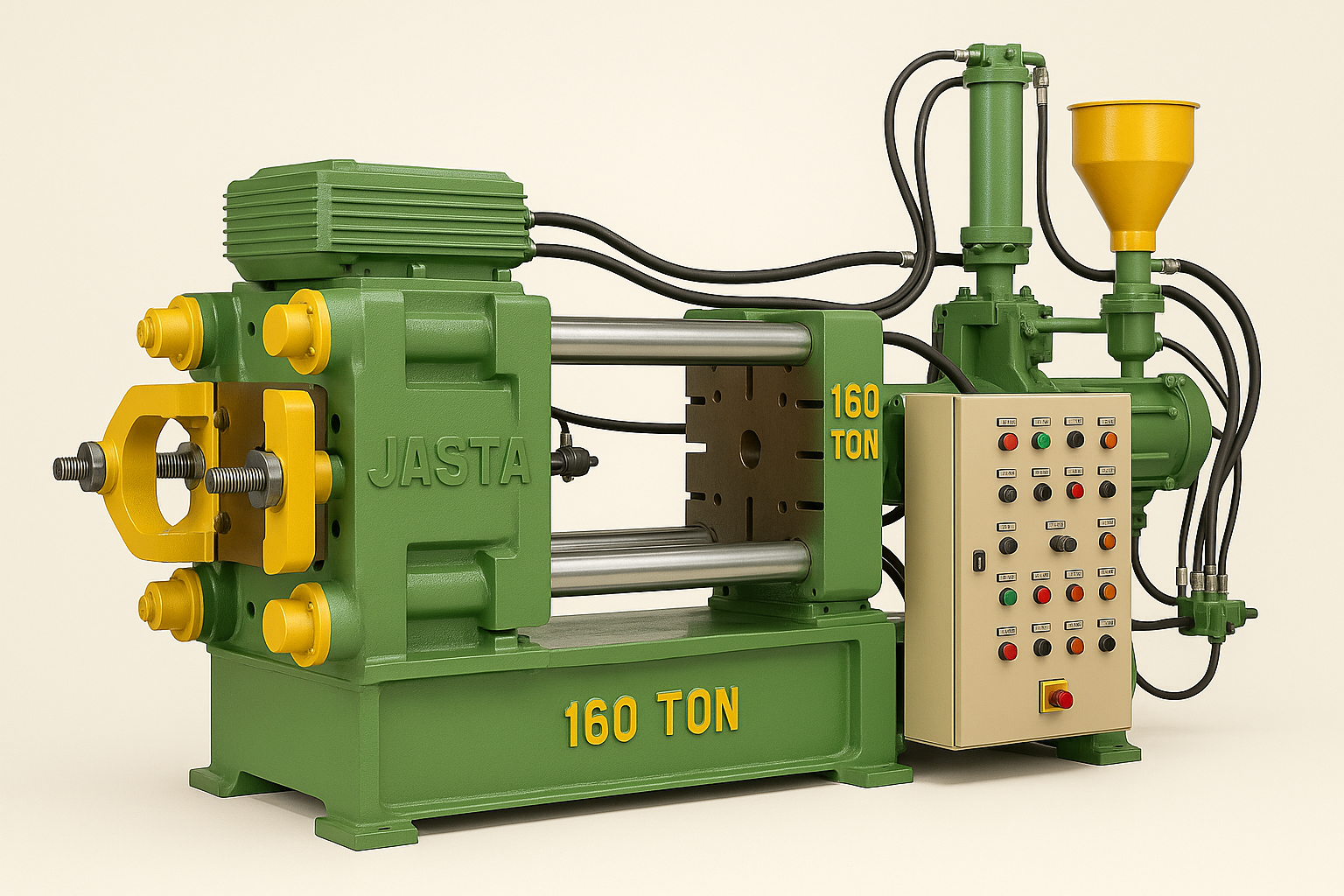Die casting machines form the backbone of precision manufacturing technology, allowing industries to deliver intricate metal components at high accuracy and speed. The 160 Ton Jasta Die Cast machine is just one of the favorite models that is widely known for its durability and dependability. However, achieving peak results relies on tweaking machine settings. Here at Radhe Industries India, we are committed to empowering businesses with the materials and knowledge needed to maximize their die casting effectiveness.
Here, we’re going to guide you through the general steps of adjusting the 160 Ton Jasta Die Cast machine settings.
Knowing the Fundamentals of Die Casting
Before delving into the settings, one must understand the fundamentals of die casting. The process is carried out by forcing high-pressure molten metal into a mold cavity. Temperature, injection rate, and pressure are all pertinent factors in the creation of the end product.
The 160 Ton Jasta Die Cast machine is appropriate for medium to large components and is thus appropriate for use in the automotive, aerospace, and industrial industries.
Main Settings of the 160 Ton Jasta Die Cast Machine
To ensure precision in your die-cast products, be keen to observe the following settings:
1. Injection Speed
Why It’s Important: Injection speed refers to the rate at which the melted metal pours into the mold. A higher speed will give a smoother surface finish but also cause air entrapment.
How to Set:
Locate the control panel and select the speed depending on the complexity of the component. For thin-walled components, use a high speed, and for thick components, use a low speed.
2. Clamping Force
Why It Matters: The clamping force maintains the die closed tight throughout the injection process. The 160-ton capacity provides solid clamping for medium-sized molds.
How to Adjust:
Adjust using the digital interface or clamping pressure dial. Gradually increase the pressure until the mold halves seal tightly, without flash or leakage.
3. Injection Pressure
Why It Matters: Proper pressure allows the molten metal to fully fill the cavities of the mold, resulting in perfect parts.
How to Alter:
Monitor the pressure gauge and alter it to accommodate the requirements of the material. Aluminum alloys typically require higher pressure than zinc.
4. Melt Temperature
Why It Matters: Temperature directly affects molten metal’s flowability. Incorrect temperatures could lead to porosity or incomplete fills.
How to Adjust:
Check the temperature reading from the melting furnace. Alter the settings to ensure a uniform temperature suitable for the alloy being used (e.g., 660°C for aluminum).
5. Cooling Time
Why It Matters: Sufficient cooling will make the component harden uniformly without warping or contraction.
How to Adjust
Mount the cooling timer on the control panel. The time will vary depending on component size and thickness, typically 15 to 60 seconds.
Step-by-Step Instructions on How to Set Settings
Prepare the Machine
Ensure all safety practices are followed, such as protective gear.
Perform a pre-operational inspection to see that the machine is free from any dirt and debris.
Install the Mold
Mount the mold securely onto the platen using provided clamps and position it in proper orientation.
Input Material Specifications
Enter the alloy type, melt temperature, and expected shot weight into the system.
Adjust Key Parameters
Change injection speed, clamping force, and pressure based on the component’s requirement.
Run a Test Cycle
Perform a dry run without molten metal to verify smooth operation.
Fine-Tune Settings
Scan the first few parts for defects like porosity, flash, or incomplete fill and adjust settings if needed.
General Tips for Troubleshooting
Problem: Flash on Parts
Solution: Reduce injection pressure or increase clamping pressure.
Problem: Incomplete Fill
Solution: Increase injection speed or melt temperature.
Problem: Surface Defects
Solution: Decrease cooling time or polish mold surface.
Why Radhe Industries India?
At Radhe Industries India, we specialize in offering exceptional industrial solutions and advisory services. Our die casting machine skills ensure our clients enjoy higher productivity and product quality. For more than four decades now, we are your best bet for precision manufacturing.
Also Visit: Analyzing the capabilities of the 160 ton white metal die casting machine with precision
Conclusion
Tuning the settings on your 160 Ton Jasta Die Cast machine to its optimal level is the key to top-class production at optimized levels of efficiency. Tuning parameters such as injection speed, pressure, and temperature with high accuracy will guarantee defect-free production with reliability. To learn more or to learn about our products and services,
Visit: radheindustriesindia.com
Experience a new level of production with Radhe Industries India – where precision and innovation unite!




